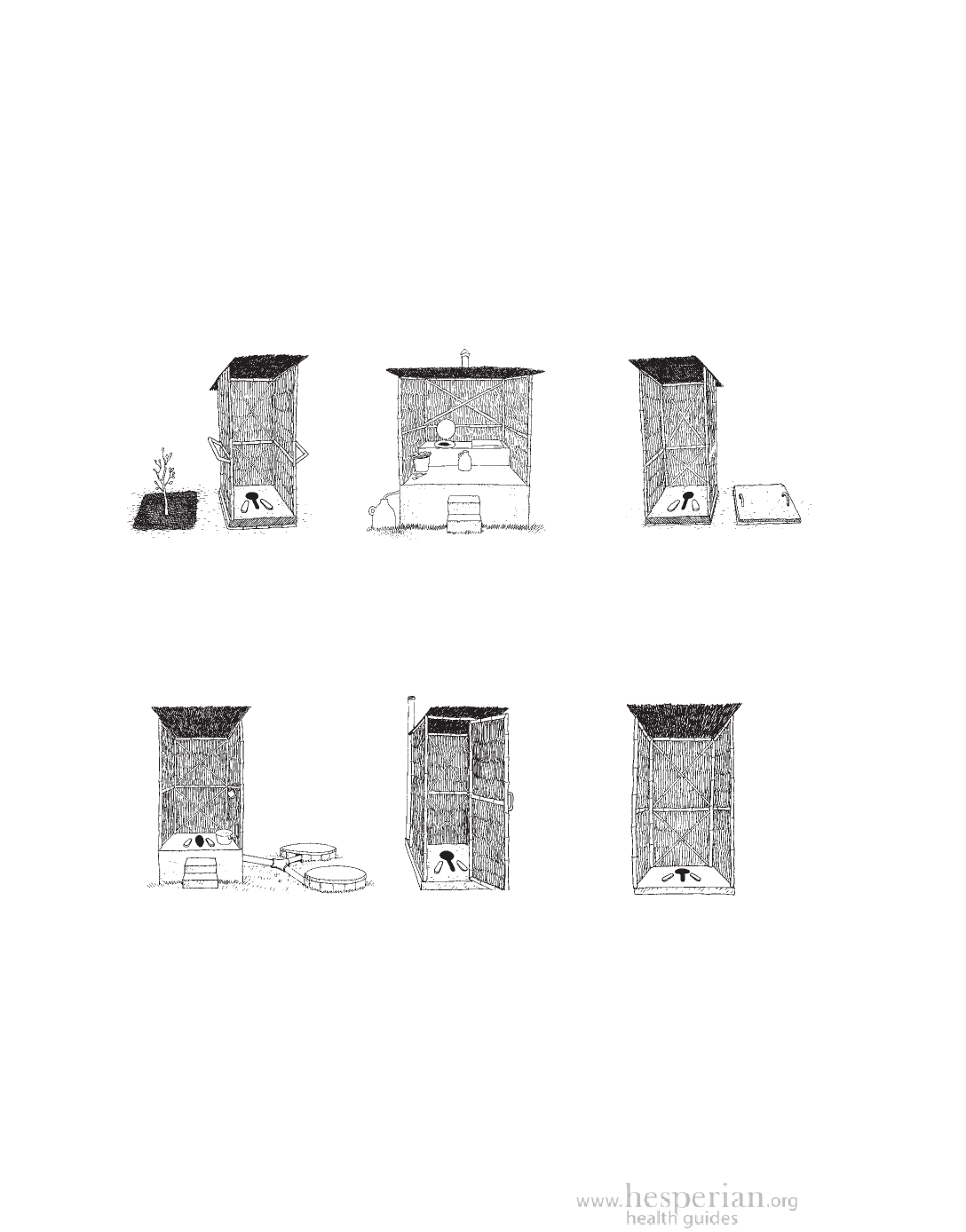
118 Building Toilets
Toilet Choices
No kind of toilet is right for every community or household, so it is important
to understand the benefits of each toilet. Toilets connected to sewer systems
are complicated to build, so this book describes only toilets that use little or no
water. (The activity on page 138 can help decide which toilet may be best for
your community’s needs.)
Toilets that use little or no water
Simple compost toilet
for tree planting
Best in places where
people wish to plant trees
and can manage a movable
toilet (see page 126).
Urine diverting dry toilet
Best in places where people
will use treated human waste
as fertilizer, and where the
groundwater is high or there is
risk of flooding (see page 129).
2 pit compost toilet
Best in places where
people will use treated
human waste as
fertilizer (see page 128).
Pour flush toilet
Best in places with deep
groundwater and where
people use water for anal
washing (see page 136).
Ventilated improved
pit (VIP) toilet
Best in places with deep
groundwater and no risk
of flooding (see page 123).
Closed pit toilet
Best in places with
deep groundwater
and no risk of flooding
(see page 120).
Note: These drawings show toilets with no doors and no covers over the toilet
hole, so you can see what they look like inside. All toilets should have doors,
and toilet holes should be covered when not in use. Also, toilets should be made
so that everyone in the community can use them (see page 111).
A Community Guide to Environmental Health 2012